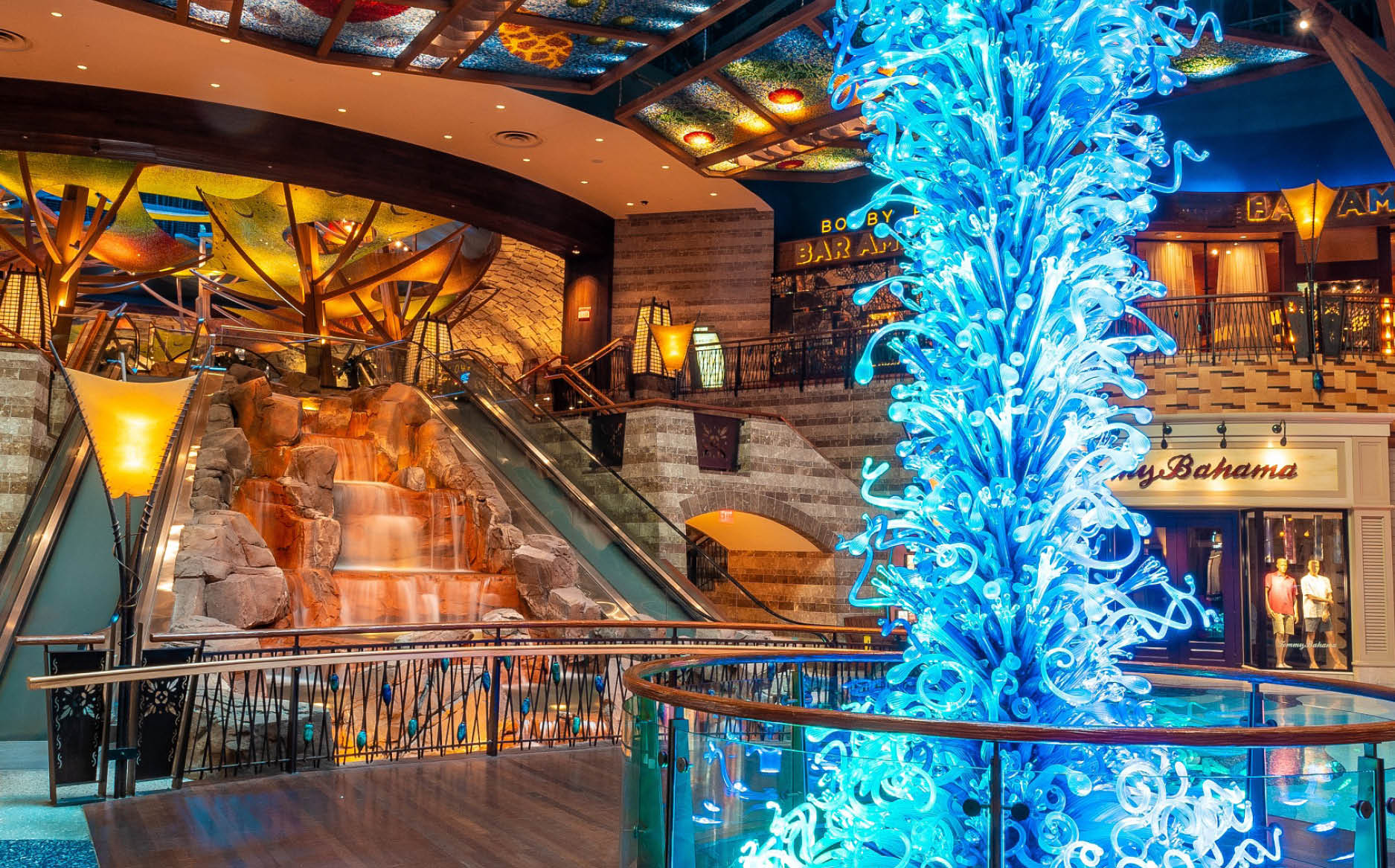At 7:00 AM on a Monday morning, 70 percent of the almost five thousand slot machines at this Indian Casino in South California are occupied. How many stayed through the night and how many arrived after an early breakfast isn\’t clear. The data collection engines you might find on the Las Vegas strip haven\’t made it this far – but the latest IGT and Aristocrat slots have. The casino floor is windowless, the noise is loud, and the visual cacophony of screens is overwhelming. For the most part, the participants are seated and singularly focused. Casino management tells us that the average time spent on the floor is about five hours.
Spectator Sport
Andre Bazin the French theater critic in describing the difference between going to the movies and going to theater was that a film audience watches alone. Thus, some may love a film and the person sitting next to them may be indifferent. A theater audience watches as collective and the viewing experience is viscerally shared. Playing the slots is somewhere in between. There is an individual with dazed, mesmerizing focus and yet the collective excitement is palpable. Slots designers have recognized players are interested in being entertained and most accept the premise they will not so much as lose but pay for being transported in a fantasy space of possibility. When someone does win, the excitement is not just for the individual, but all the players in the vicinity that witness the event. Generally, the winnings are plowed back into the system, but that is the player\’s choice. Regular gamblers register and are given perks; gift cards, meal vouchers, and stuff to incentivize frequent visits.
Retail and Casinos
Where does retail fit? From casino and sport stadiums to Broadway theaters and airports, retail plays a part. Unlike a mall or an urban street, the role of being \”supporting cast\” in these other venues is a delicate one. Play it right and it works like a charm, miss and it\’s wasted space and energy.
Let\’s start with modern gaming.
The relationship between casinos and retail has evolved from early days of Las Vegas where retail was about asking for forgiveness. \”Yes, I stayed out all (night) weekend, but I\’ve brought you some(bling) thing. Please forgive me.\”
Remember, in the 1950s the focus of the Las Vegas casino was on table games. The slots were where the gambler parked his wife/girlfriend. She plugged in a quarter and pulled a handle. The reels spun … and she did it again. And again. The real action was about craps, poker, roulette, and baccarat. Retail was a c-store for cigarettes, a candy bar and cheap sweater if the air conditioning got to you. The forgiveness stores sold jewelry and dress-up solutions. And of course, there were the bars and some modest quick-serve dining solutions.
The American casino in 2019 is principally focused on slots. Yes, there are table games, but slots rule. The slots customer skews female and is well over 40. The games are themed many to favorite television shows, characters, even Madonna has her own machine. Most casinos have a non-smoking section, although the main floor even with massive air filtration systems still reeks. I didn\’t know they still made regular unfiltered Lucky Strikes.
Las Vegas has reinvented itself. Yes, the focus is on gaming, but there are shows, sports, fine dining and shopping. The simple equation that a Vegas vacation has to have is a variety of stimulations. And most importantly, most of the crowd comes from a distance – whether they drive or fly — they have been traveling hours to get there.
Go to a major Las Vegas hotel and you\’ll find a shopping mall. It isn\’t about the tradeoff between gaming and retail — it is supporting cast. You need a break. The entertainment factor is in play. The upscale casinos offer luxury brand outlets at premium prices; no race to the bottom here. Tucked away in theatrically designed malls, aspirational brands meet luxury marques head-on. Granted, many of these high-ticket boutiques cater to international tourists who find the exchange rates working in their favor.
Good for Vegas. But the fastest growing segment of the American gaming market is Indian casinos. The principle is that profits of the casino fund social welfare programs for the tribes from health care to college scholarships. Coast to coast, some tucked behind a reservation gas station, many casinos are massive organizations that have given Atlantic City and Las Vegas a run for their money: think Foxwood and Mohegan Sun. The Indian casino tends to play to a local audience. Players that come from fewer than two hours away dominate. Particularly in Southern California, the crowd is typically multi-ethnic. Most American casinos have recognized the importance of catering to the Asian market, particularly the Chinese customer. Gaming for them has been a historic form of recreation. A subset of the slot machines has Chinese themes.
Retail fits into this booming American recreation engine. The first lesson is understanding your local market. Rural Connecticut and Southern California have different customer mixes. While the income levels may skew lower than a casino on the strip in Vegas, the complete cross-section is the same. You have some very well-off visitors. The challenge is to hang on to the mean, but not ignore or offend the top. Yes, you have a tee-shirt buyer, but a shearling coat or elegant silk dress is not out of place.
What draws people to casinos is the escape. Retail is always about reinvention. The role of being supporting cast is a good one. From airports to casinos, from Wrigley Field to the Museum of Modern Art, the mindset of the destination opens up possibilities. Our job is to understand them.




